In Naya Pingla, no one is recognised by their religion, but by their work and the suffix of “chitrakar” after their first name.Naya (West Midnapore, West Bengal): In the quaint hamlet of Naya in West Bengal, every wall is a canvas and everyone practices ‘patachitra’, a form of ancient folk art. They don’t just paint; they also sing as they unfurl the scroll and show their artistry to the audience.
This diverse repertoire of art tells stories that range from traditional mythological or tribal tales to modern Indian history and even contemporary issues. The first frame of the scroll is usually about the protagonist of the story, and the patua then skilfully manoeuvres the scroll, while singing the narrative, frame by frame.
One can reach the village from Kolkata by car, or by the daily trains from Kolkata to Balichak on the Kharagpur line.While the entrance to the village could be somewhat imperceptible at first, the generous assistance of Laltu Chitrakar from the start ensured that we encountered no trouble. Laltu, a young lad in his early 20s, was eager to act as a guide and share his limited knowledge with all who came to visit the village. Although he is currently under the tutelage of a senior painter, he chooses to call himself a “Chitrakar” like an established artist.
He informed us that while the village is a predominantly Muslim settlement, there are a number of Hindu artists as well. Living together in harmony, no one is recognised by their religion, but by their work and the suffix of “chitrakar” after their first name. They are rather fond of the adage “Na Hindu na Musalman” (neither Hindu nor Muslim). It won’t be surprising to find a Muslim chitrakar painting a depiction of Hindu lore or vice versa.
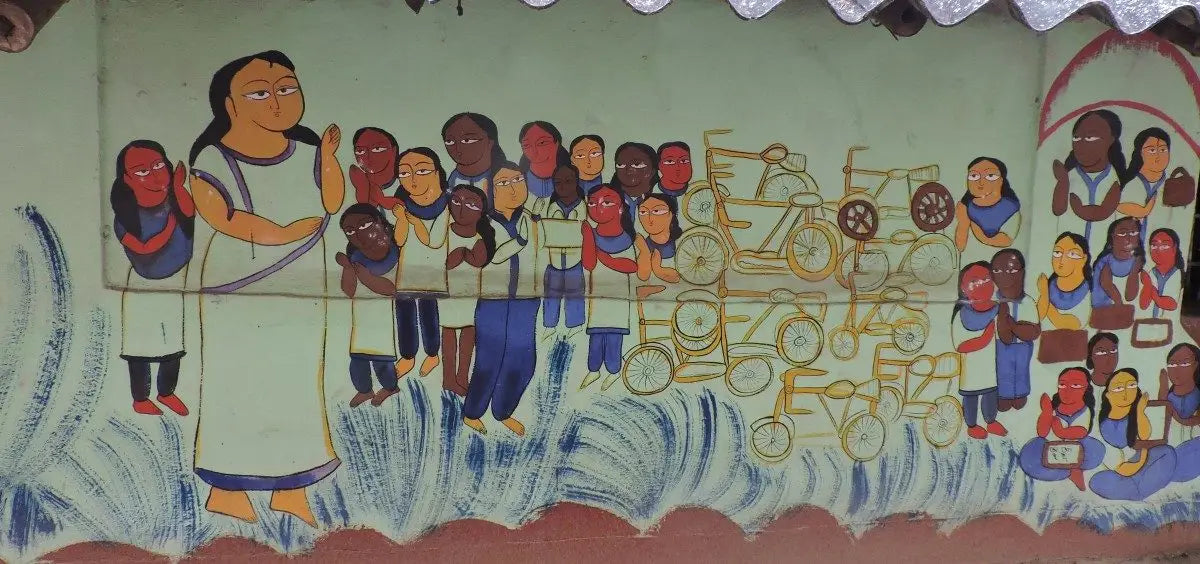
Credit: Srijita Datta
We saw the quintessential chitrakar residence of Iyakub Chitrakar, one of the most renowned artists in the area who has flown to London and Liverpool to display his work. As we entered his house, Iyakub was giving some finishing touches to one of his scrolls while two other women were painting their respective scrolls. He was very accommodating and hospitable and hastily left his work to pull chairs for us and answered every question we asked in great detail.
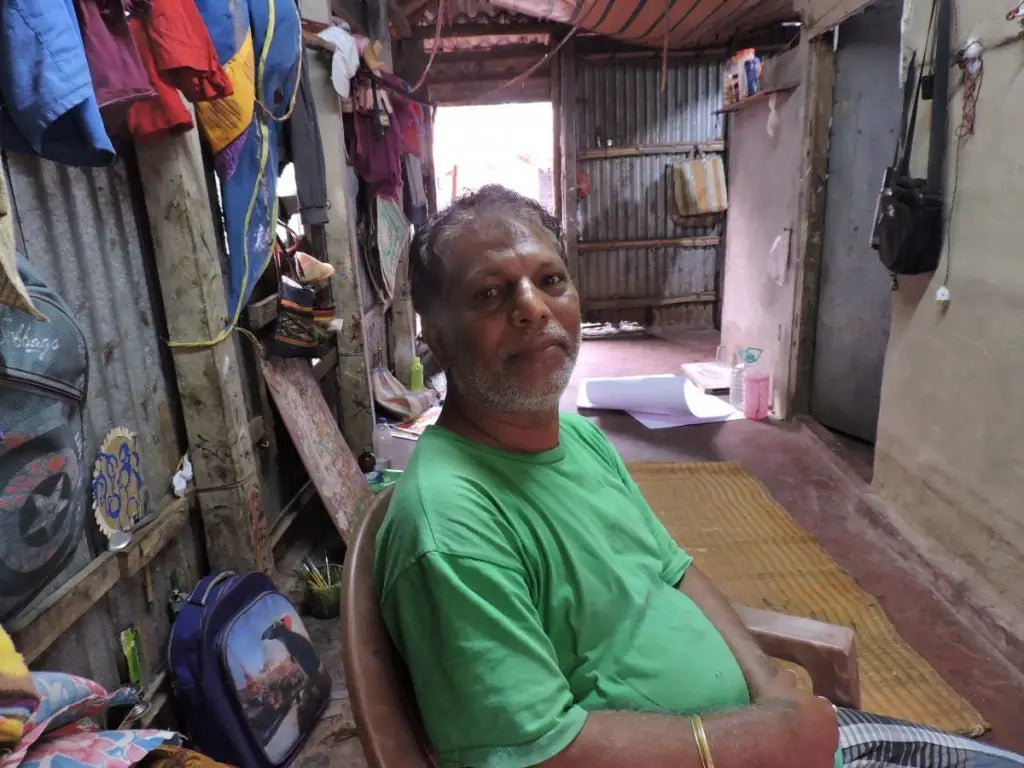
Iyakub Chitrakar at his residence. Credit: Srijita Datta
According to him, the history of this Patua community dates back to around the 13th century. Traditional practitioners of the ancient craft used to go from village to village entertaining and educating the village folks. In return for their performances, the villagers used to offer them rice and vegetables as payment.
They procured their paint from natural sources by crushing flowers or fruits such as marigold, saffron, turmeric and sometimes even the barks of trees. These were then mixed with the gum of the Bengal quince flower (bael) to make paint. Surprisingly, this is prevalent even to this day.
“Some Patuas in other parts forego this laborious process. But in this village, we insist on it and it makes our patachitras unique,” says Iyakub.
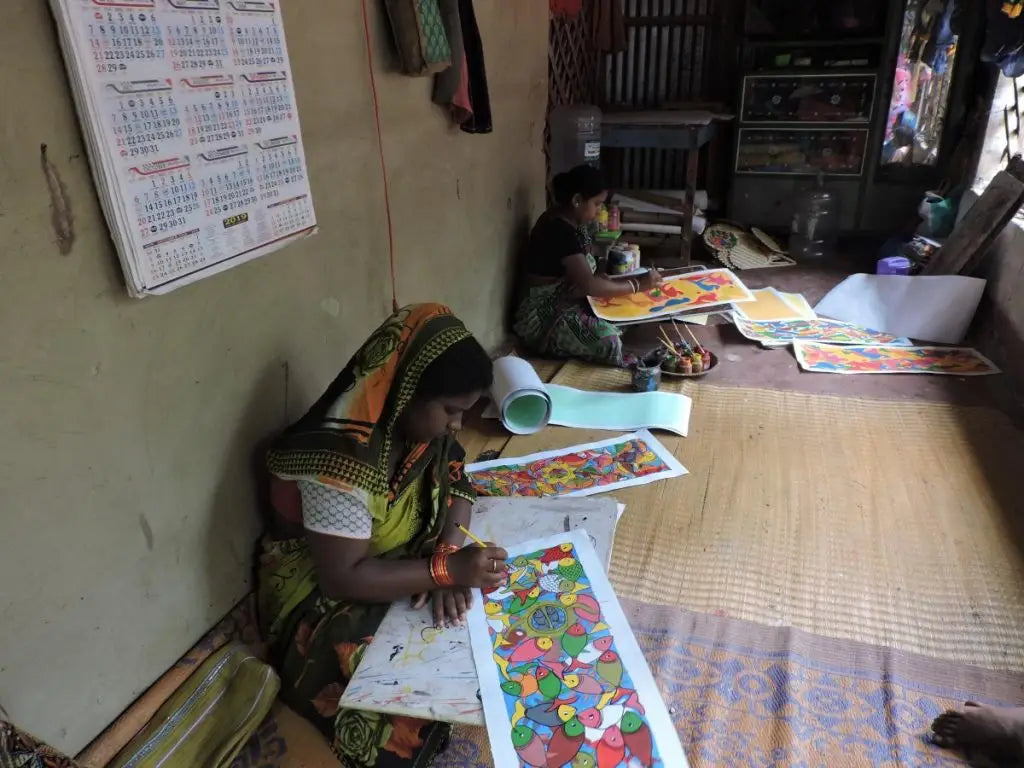
Credit: Srijita Datta
Exceptions can only be made when painting on clothes or other materials that involve regular washing. “People are paying for our work, and if the paint wears off after washing, it wouldn’t be fair to them,” he adds. Most of the plants required are grown locally and other materials like turmeric for yellow, indigo for blue are available at the nearby Pingla market. Often these natural paints are prepared in advance in coconut shells and stored in plastic jars for use all year round.
He proceeded to describe how a pata was created in the earlier days using jute fibres. Lamp black was mixed with the sap of the wood-apple tree, thereby acting as a binder for the fibres. These, when put together, turned it into a canvas. Nowadays stitching together multiple sheets of commercial poster paper is all it takes. Presently there are paintbrushes of different sizes to suit the artist’s need, but in the earlier days, it wasn’t possible to draw minute details like the eye or the saree lining. They used to trim goat fur and attach to reed pipes, substituting it as a makeshift brush.
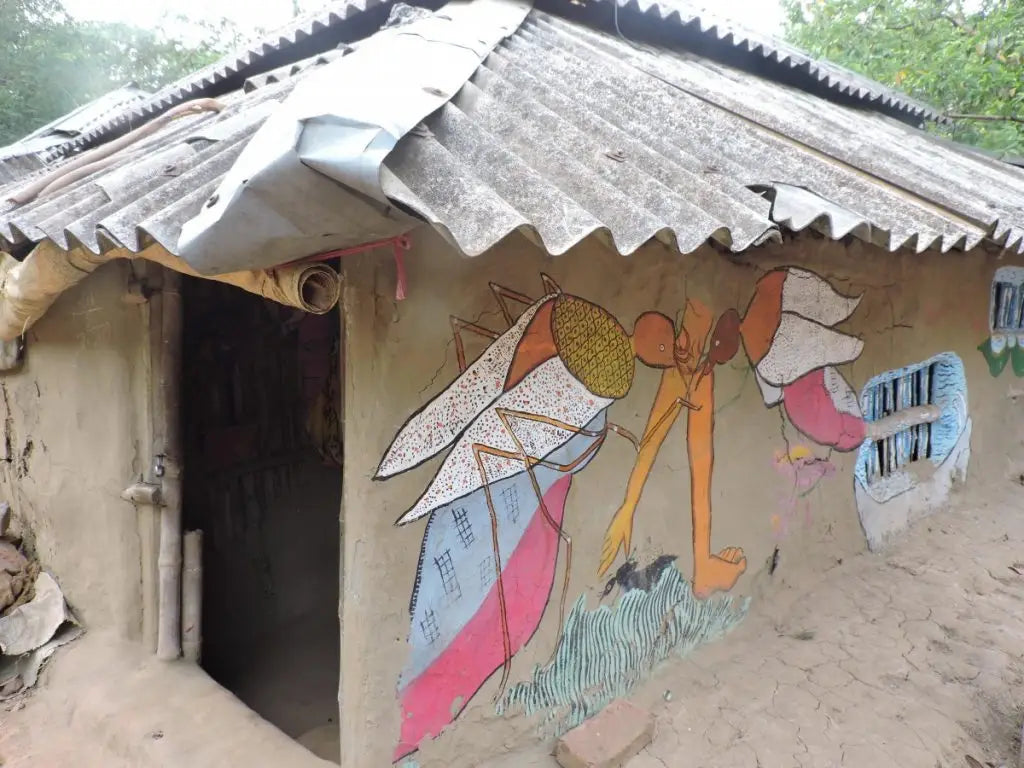
Credit: Srijita Dutta
There was a time when Iyakub feared that their art form was on the verge of extinction due to no assistance from the erstwhile government. He expressed his gratitude to the current Mamata Banerjee-led Trinamool government, for having given every artist health insurance, a steady amount of monthly payment and other facilities. This is encouraging youngsters to take up the traditional art form as both a passion and a profession. They have also been enlisted to paint the subway stations currently under construction, and a plan to re-decorate the domestic airport is also underway.
The chitrakars do not sketch with pencil first but apply paint straight away, with very lucid and swift strokes. Although the tradition was customarily passed down from father to son for many generations, many Patua women have also taken up the craft, guided by a senior painter Dukhushyam Chitrakar. Led by her, these women have not only established themselves as excellent artists, but also as leaders within the community. Under an initiative called ‘Art for Livelihood’, these women are spearheading local development.
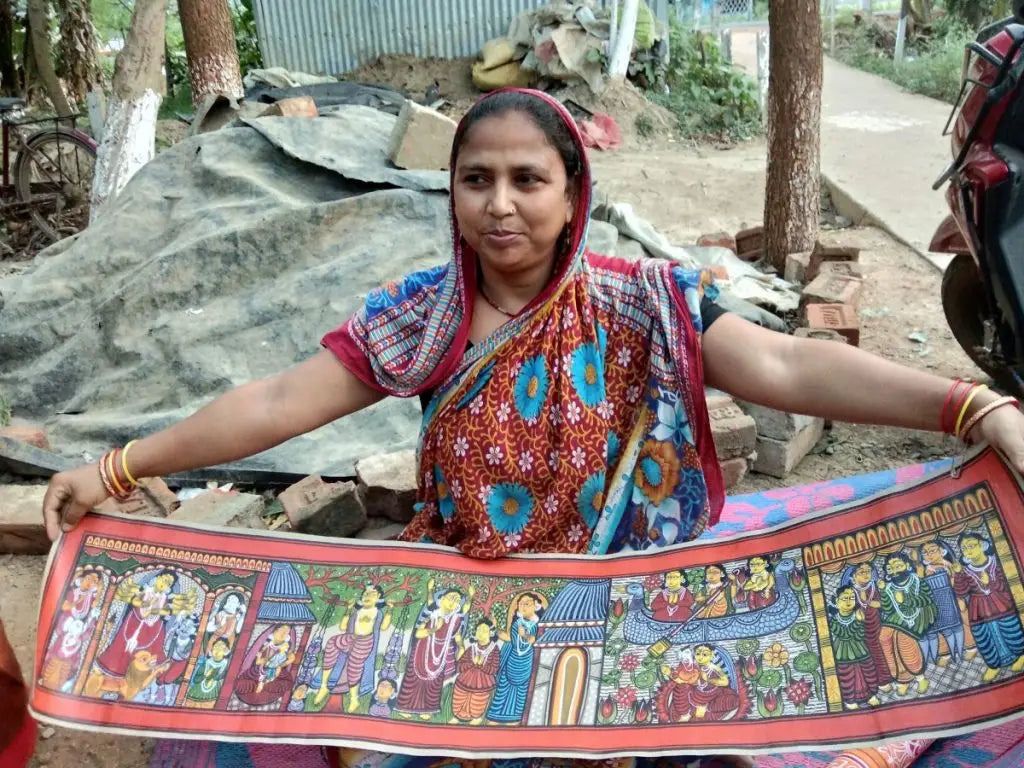
Putul Chitrakar showing one of her works, which she has priced at Rs 1200. Credit: Srijita Datta
She delightfully showcased some of her works and sang a song narrating an episode from “Krishnaleela” upon request. She further added her intent to perform at the annual festival called ‘Pot Maya’, which was started in 2010 as a means to save this indigenous art form. “The whole village looks like an art gallery. Visitors can learn about the craft and participate in painting workshops”, she says.
There are no hotels in the area, but chitrakars are more than happy to host visitors in homestays during the three-day long festival. Performances by chhau folk dancers and baul singers from the neighbouring villages of Purulia and Nadia are also an attraction. Chitrakars even spruce up the surroundings with flowers and hang scrolls in their courtyards.
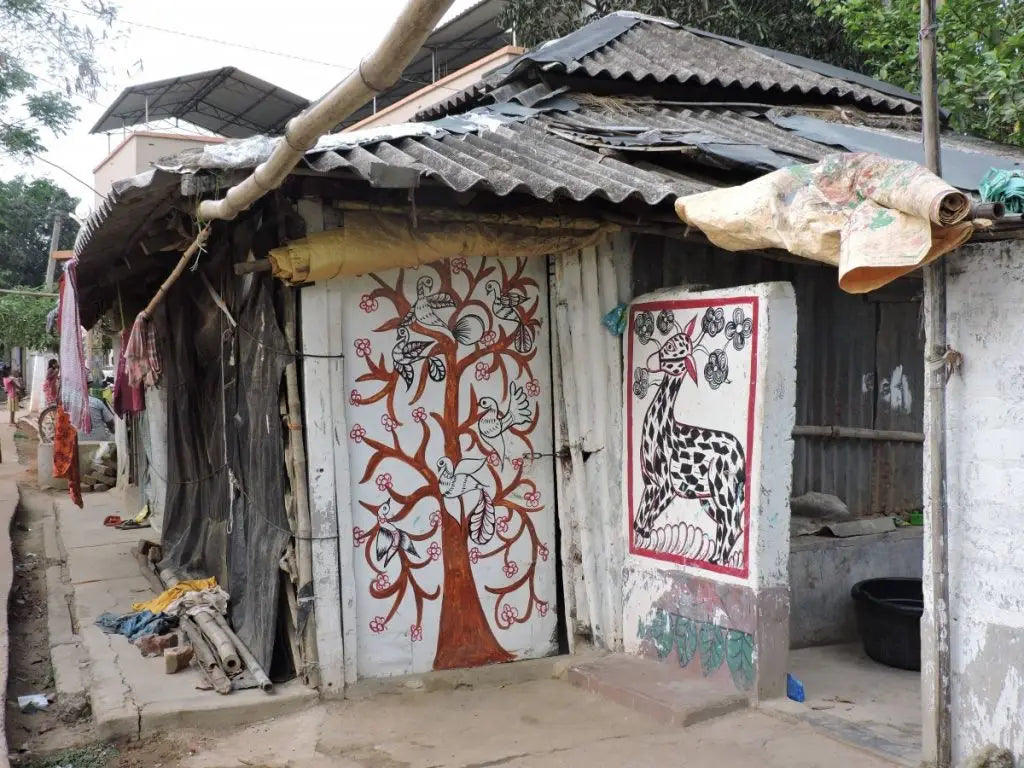
Credit: Srijita Datta
Many Patuas from the village won the President’s Award too and participated in exhibitions, cultural exchange programmes worldwide. Anwar Chitrakar has managed to sell his paintings to the Delhi Metro Rail Corporation for Rs 80,000 and had his work showcased at the Harley Gallery in the UK.
They still live in mud houses, encounter almost all regular problems like water crises and frequent power cuts. But they never complain; they are always smiling, and occasionally singing songs too. The only thing that matters to them is receiving recognition for their work and more importantly, keeping the flame of this traditional art form alive for future generations to witness.
Blogs you might also like:
Karuppur kalamkari paintings Kallakurichi wood carvings get geographical indication (GI) tags
Madhubani Paintings - A Brief Story of the Art
Magnificent Pattachitra Paintings of Orissa
 Verified Purchase
Verified Purchase











































































































































































































Leave a comment (all fields required)